#D. J. Enright
Explore tagged Tumblr posts
Text
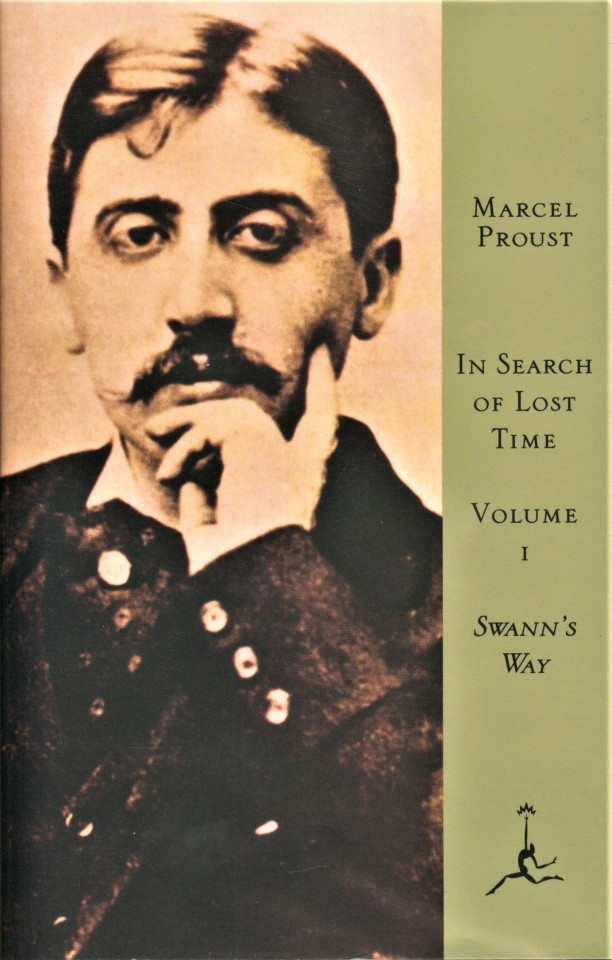
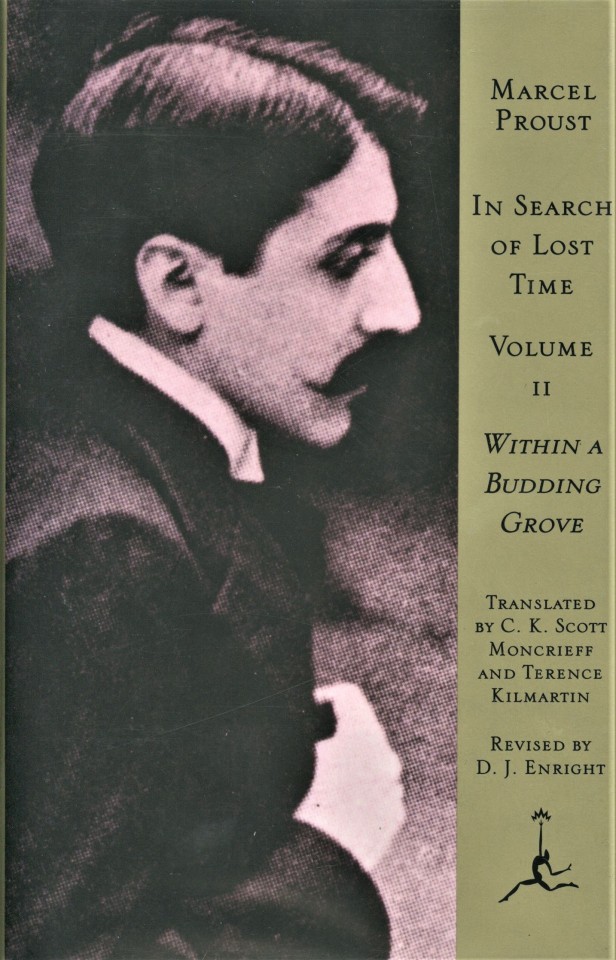
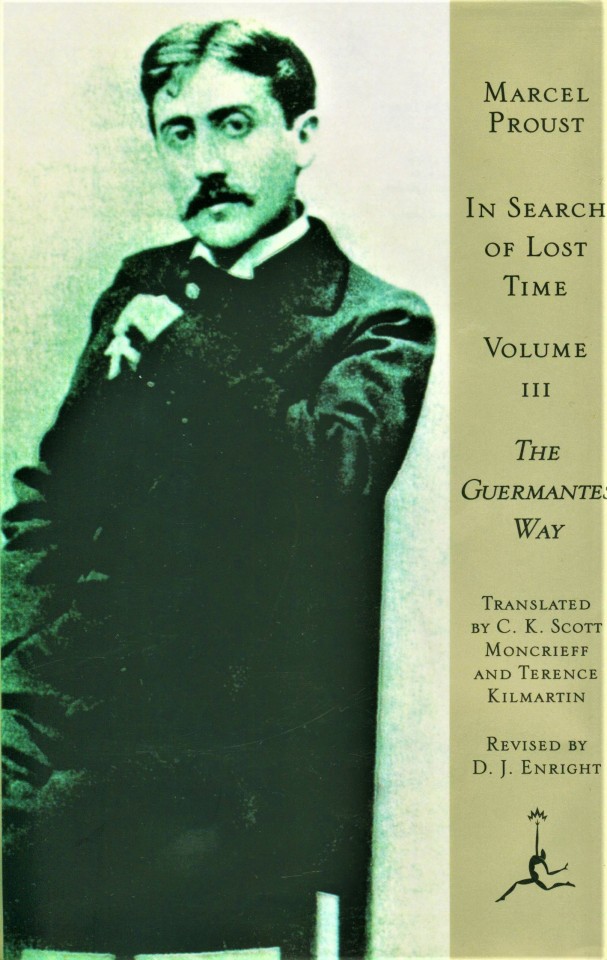
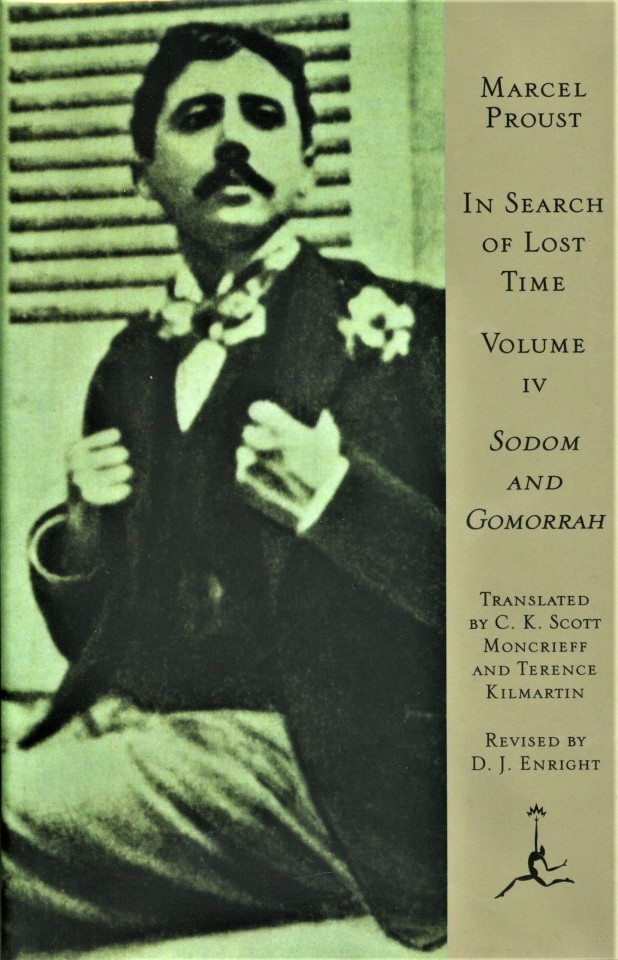
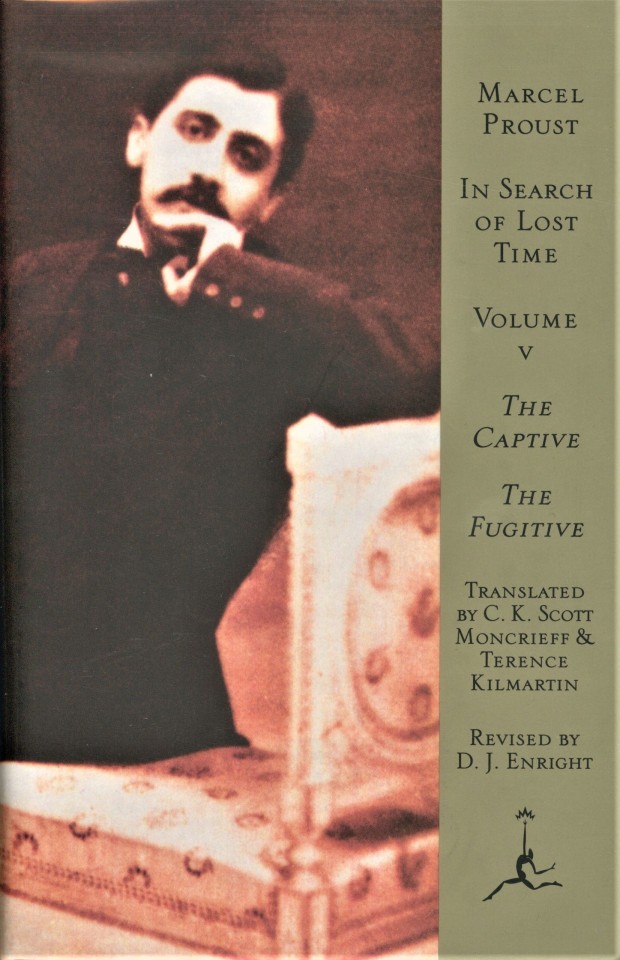

Milestone Monday
On this day, July 10 in 1871, French novelist Marcel Proust (Valentin Louis Georges Eugène Marcel Proust, to be exact) was born to an upper-class family in the Paris Borough of Auteuil. Born at a time of great change for French society, with the decline of the aristocracy and the rise of the middle class, Proust's most well-known publication, the monumental, 7-volume novel À la recherche du temps perdu (currently translated as In Search of Lost Time, but previously translated as Remembrance of Things Past) explores the effects of these changes in personal and intimate ways.
Proust began work on this novel in 1909 and continued to work on it until his final illness in the autumn of 1922 forced him to stop. It was published in France between 1913 and 1927, and has become one of the hallmarks of world literature from the 20th century. The novel unfolds as a series of memories initiated by the sensation of a sip of tea in which he had dipped a madeleine cake. The sensation sparks dormant recollections of experiences from childhood to adulthood in fin de siècle France society.
The first six volumes of the novel were first translated into English by the Scottish author and translator C. K. Scott Moncrieff from 1922 to 1930, with the final volume translated by British novelist and translator Stephen Hudson in 1931. Terence Kilmartin revised the Scott Moncrieff translation in 1981 (with the final volume translated by Andreas Mayor) using the new French edition of 1954. The copy shown here is a revision of that revision by British academic D. J. Enright, based on the French Bibliothèque de la Pléiade edition of 1987-1989, published in six volumes by the Modern Library in New York (and by Chatto and Windus in London) in 1992. It is the first edition to use the more current translation of the title, In Search of Lost Time.
View other Milestone Monday posts.
#Milestone Monday#milestones#Marcel Proust#birthdays#French authors#In Search of Lost Time#Rememberance of Things Past#À la recherche du temps perdu#C. K. Scott Moncrieff#Terence Kilmartin#D. J. Enright#Modern Library
53 notes
·
View notes
Text
Trans Rights Readathon Recs!
Books by Trans Authors - Part 1
This recommendations post for Trans Rights Readathon is brought to you by books we already had in our library and it got a little out of hand! We decided first to break things down by other rep in case that was helpful for folks. We have another post planned breaking things down by genre as well, so stay tuned! With series, we only include the first book in the series to keep our stacks slightly more manageable!
As far as we know, the authors here are out as trans / nonbinary / genderqueer. Please don't be a dick and try to force authors who happen to write trans characters to out themselves! We did our best on rep breakdowns, but please let us know if we misfiled anything since we haven't read everything yet.

Trans, Nonbinary & Genderqueer Rep
Pet by Akwaeke Emezi
The Sacrifice by Rin Chupeco
An Accident of Stars by Foz Meadows
Hell Followed With Us by Andrew Joseph White
Thicker Than Blood by Sera Quim
Infinity Alchemist by Kacen Callender
A Bone in His Teeth by Kellen Graves
The Sunbearer Trials by Aiden Thomas
Cemetery Boys by Aiden Thomas
Junker Seven by Olive J. Kelley
Godly Heathens by H.E. Edgmon
The Flowered Blade by Taylor Hubbard
You can find more recs for Polyamory Rep, Sapphic / wlw Rep, and Achillean / mlm Rep all written by trans authors under the cut!

Polyamory Rep
An Accident of Stars by Foz Meadows (Poly-normative world build, though I'm not 100% sure if there are any major polyamorous relationships)
Thicker Than Blood by Sera Quim (MMM with a trans masc protagonist)
Infinity Alchemist by Kacen Callender (M/M/genderfluid? Trans masc main character and a love interest who regularly uses alchemy to change their gender)
Iron Widow by Xiran Jay Zhao (MMF)
SPECTR by Jordan L. Hawk (Whole series is M/M/genderless demon sharing a body with the main character. Volume 1 is being rebound which is why Volume 2 is pictured)
Mistress of Lies by K. M. Enright (From what I can tell MMF, but this is one of the few we haven't read yet)
Silver Under Nightfall by Rin Chupeco (MMF but Gabe would like me to convey that the most important part of the dynamic is that it's dom/sub/dom)
Please feel free to ask for more info on these especially, at least one of us have read most of these (and the few we don't are high up on our reading list for the week.)

Sapphic / wlw Rep
We have been building our sapphic library but apparently need to focus on more sapphic romance written by trans authors specifically! Here's what we do have (with some real gems we love). We tried to aim for all of these having the main romance be sapphic!
Gwen & Art are Not in Love by Lex Croucher
The Dead Take the A Train by Cassandra Khaw & Richard Kadrey (Book 1 in a duology)
Providence Girls by Morgan Dante
The Fall That Saved Us by Tamara Jerée
Time and Time Again by Chatham Greenfield
An Accident of Stars by Foz Meadows (I think this is a completed duology!)
Junker Seven by Olive J. Kelley (This is getting a sequel!)

Achillean / mlm Rep
This category ended up being...quite large. It really goes to show you just how many more gay books by trans authors have come out in the last few years! Okay, strap in, here we go:
Captive Prince & Dark Rise by CS Pacat (Captive Prince is a completed triology and Dark Rise will be a trilogy)
Thicker Than Blood by Sera Quim
How to Bite Your Neighbor & Win a Wager by D. N. Bryn
Prince of Sorrows by Kellen Graves (Book 1 of the Rowan Blood series, which currently has 4/8 books out)
A Strange and Stubborn Endurance by Foz Meadows (Book 1 of the completed Tithenai Chronicles duology)
Infinity Alchemist by Kacen Callender (Book 1 of the Infinity Alchemist series)
Iron Widow by Xiran Jay Zhao (Book 1 of a triology with 2/3 books currently out)
SPECTR by Jordan L. Hawk (18 connected novella length stories collected into what should soon be 6 volumes if you want them physically! Each novella is one case!)
So This Is Ever After, Spell Bound, Otherworldly, & In Deeper Waters by FT Lukens (Each is a complete stand alone romance!)
Silver Under Nightfall by Rin Chupeco (Book 1 of the completed Reaper duology)
#trans rights readathon#book recommendation#booklr#trans books#queer books#lgbt books#polyamory books#sapphic books#queer romance#queer horror#romance books#trans rep#queer rep#sapphic rep#polyamory rep#trr2025#polycraftory#polycraftory reads#polycraftory recs#trans#transgender#nonbinary#enby#genderqueer#genderfluid#trans author#queer author#books and reading#books#bookworm
24 notes
·
View notes
Text
But in saying that he would speak of me to Gilberte and her mother (which would enable me, like an Olympian deity who has taken on the fluidity of a breath of wind, or rather the aspect of the old greybeard whose form Minerva borrows, to insinuate myself, unseen, into Mme Swann's drawing-room, to attract her attention, to occupy her thoughts, to arouse her gratitude for my admiration, to appear before her as the friend of an important person, to seem to her worthy to be invited by her in the future and to enter into the intimate life of her family), this important person who was going to use on my behalf the great influence which he must have with Mme Swann inspired in me suddenly an affection so compelling that I had difficulty in restraining myself from kissing his soft, white, wrinkled hands, which looked as though they had been left lying too long in water. I almost made as if to do so, in an impulsive moment which I believed that I alone had noticed. For it is difficult for any of us to calculate exactly the extent to which our words or gestures are apparent to others. Party from the fear of exaggerating our own importance, and also because we enlarge to enormous proportions the field over which the impressions formed by other people in the course of their lives are obliged to extend, we imagine that the incidentals of our speech and of our postures scarcely penetrate the consciousness, still less remain in the memory of those with whom we converse. [...] And yet, some years later, in a house in which M. de Norpois, who was also a guest there, seemed to me the most solid support that I could hope to find, because he was a friend of my father, indulgent, inclined to wish us all well, and moreover, by profession and upbringing trained to discretion, when, after the Ambassador had gone, I was told that he had alluded to an evening long ago when he had "seen the moment in which I was about to kiss his hand," not only did I blush to the roots of my hair but I was stupefied to learn how different from what I might have believed was not only the manner in which M. de Norpois spoke of me but also the composition of his memory. This piece of gossip enlightened me as to the incalculable proportions of absence and presence of mind, of recollection and forgetfulness, of which the human mind is composed; and I was as marvellously surprised as on the day on which I read for the first time, in one of Maspero's books, that there existed a precise list of the sportsmen whom Assurbanipal used to invite to his hunts a thousand years before the birth of Christ.
from marcel proust, within a budding grove, trans. c. k. scott moncrieff and terence kilmartin, rev. by d. j. enright
7 notes
·
View notes
Note
Honestly, Ladz, I'm scared to read fealty even though I bought it. I feel like I'll become obsessed and then want something similar
I am so flattered by this; thank you so much!!
In terms of becoming obsessed and wanting more, there are minimum 7 more volumes to write (it takes a long time to stop a forever war while preserving a vestigial empire, who knew!). But in the interim of me writing them, I have a carefully curated to-read list for the different aspects of FEALTY that you like most.
NON-FICTION (also featured in the back of the book)
The Unwomanly Face of War: An Oral History of Women in World War II by Svetlana Alexievich (2017)
God's Playground: A History of Poland, Volumes 1 & 2 by Normal Davies (2005)
Revolutionary Russia, 1891 - 1991: A History by Orlando Figes (2015)
Queer Gothic by George Haggerty (2006)
Rasputin: Faith, Power, and the Twilight of the Romanovs by Douglas Smith (2016)
VAMPIRES
Hellsing by Kouta Hirano (1997 - 2008)
Monogatari by nisiOisin, illustrated by Vofan (2005 - Present)
Vampire Hunter D by Hideyuki Kikuchi, illus. Yoshitaka Amano (2005 - Present in English)
A Flame in the Night by Morgan Dante (2023)
Ossuary by T.D. Cloud, illus. by Ambi Sun (2023)
Unholy with Eyes Like Wolves by Morgan Dante (April 2024)
Mistress of Lies by K.M. Enright (August 2024)
SLAVIC POLITICAL FANTASY
Tower of Fools by Andrzej Sapkowski (2020 in English)
The Wolf and the Woodsman by Ava Reid (2021)
Kalyna the Soothsayer by Elijah Kinch Spector (2022)
SLAVIC FICTION
Day of the Oprichnik by Vladimir Sorokin (2011 in English)
The Books of Jacob by Olga Tokarczyk (2022 in English)
GENERAL POLITICAL FANTASY
Titus Groan by Mervyn Peake (1946)
Gormenghast by Mervyn Peake (1950)
Titus Alone by Mervyn Peake (1959)
Kushiel's Dart by Jacqueline Carey (2001)
The Traitor Baru Cormorant by Seth J. Dickinson (2015)
GOTHIC FICTION
tbh Mervyn Peake's books also work for this category
The Monk by Matthew G. Lewis (1796)
Lapvona by Ottessa Moshfegh (2022)
The Lord of Astiigos by Soren Häxan (2023); please note: there is an update coming in the next few months
The Salt Grows Heavy by Cassandra Khaw (2023)
BLURBER BOOKS
(if not in previous sections)
Little Death by Pom Poison (2022 - Present)
A Botanical Daughter by Noah Medlock (2023)
A Necessary Chaos by Brent Lambert (2023)
All Tomorrow's Photos Duology by S.S. Genesee (2023)
VIDEO GAMES TO PLAY
Bloodborne (2015), especially Castle Cainhurst
Fire Emblem Three Houses (2019), the Black Eagles house
I think this is most of it!! I have read and reviewed most of these on my blog, where you will find things like content and trigger warnings.
Hope this answers the questions and please take your time! FEALTY is a dense, gory book with a lot happening both politically and interpersonally, so don't feel bad about taking time to get into it.
It took me a few years from purchase to actually reading Mervyn Peake's work, for example, and it absolutely came at the right time for me.
I hope this answers the ask!
18 notes
·
View notes
Text
Friends, please bring me recommendations for the Vampire ABC challenge—I have nothing for J, N, P, Q, X, Y and Z. I’ll share what I’ve got below the cut.
A
After Ninety Years by Milovan Glisic
B
The Balance of Fates by Raquel Raelynn
Bite Me Twice by J. S. Jasper
The Black Vampyre by Uriah Derick D’Arcy
Blood, Flesh and Magic by Viano Oniomoh
Blood in the Water by Carolina Cruz
The Book Eaters by Sunyi Dean
Bram Stoker’s Notes for Dracula: A Facsimile Edition by Bram Stoker, Robert Eighteen-Bisang, Elizabeth Russell Miller
C
☑️ Carmilla by Sheridan LeFanu
☑️ Cirque du Freak by Darren Shan
Carmilla and Laura by S. D. Simper
Carmilla: The First Vampire by Amy Chu
Carpe Jugulum by Terry Pratchett
Certain Dark Things by Sylvia Moreno-Garcia
Cutting Your Teeth by Caylan Macray
D
☑️ Dracula by Bram Stoker
Dracula’s Guest by Bram Stoker
Dead Collections by Isaac Fellman
The Depraved Prince by Lexie Axelson
A Dowry of Blood by S. T. Gibson
E
An Education in Malice by S. T. Gibson
F
Fallen Thorns by Harvey Oliver Baxter
The Fealty of Monsters by Ladz
Fledgling by Octavia Butler
Forever Red by Harvey Oliver Baxter
From Demons to Dracula: The Creation of the Modern Vampire by Matthew Beresford
From the Dark We Came by J. Emery
G
☑️ The Gilda Stories by Jewelle Gomez
Garlic and the Vampire by Bree Paulsen
H
☑️ How to Bite Your Neighbor and Win a Wager by D. N. Bryn
House of Hunger by Alexis Henderson
Human Enough by E. S. Yu
I
Interview with the Vampire by Anne Rice
Into the Ravenous Dark by A. M. Strickland
J
none
K
King of Hell by Morgan Dante
L
☑️ Love Immortal by Kit Vincent
A Long Time Dead by Samara Breger
The Lost Journal of Bram Stoker: The Dublin Years by Bram Stoker, Elizabeth Russell Miller, Dacre Stoker
Love Bites by Katrina N. Lewis
Loving Safoa by Liza Wemakor
M
☑️ Man Made Monsters by Andrea L. Rogers
☑️ Mistress of Lies by K. M. Enright
Masters of Death by Olivie Blake
The Modern Mythos Anomaly by Juniper Lake Fitzgerald
My Roommate Is a Vampire by Jenna Levine
My Summer Girl by Maeve Black
N
none
O
Odd Blood by Azalea Crowley
The One and the Other by Charlie d’Aniello
P
none
Q
none
R
☑️ Re: Dracula by Bram Stoker, Bloody FM
The Route of Ice and Salt by José Louis Zárate
S
☑️ The Southern Book Club’s Guide to Slaying Vampires by Grady Hendrix
☑️ Stake Sauce (Arcs 1 & 2) by RoAnna Sylver
Silver Under Nightfall by Rin Chupeco
T
A Tempest of Tea by Hafsah Faizal
Thirst by Marina Yuszczuk
This Ravenous Fate by Hayley Dennings
U
☑️ Unholy With Eyes Like Wolves by Morgan Dante
The Universal Vampire: Origins and Evolution of a Legend by Nancy Schumann, James E. Doan, Barbara Brodman
V
V by Aura Marquez
Vampires and Vampirism by Montague Summers
The Vampyre by John William Polidori
The Vampyres by C. R. Kane
A Vile Season by David Ferraro
W
What Manner of Man by St. John Starling (sort of already read but I still need to read the finished version)
Witch Soul by Morgan Dante
Woman, Eating by Claire Kohda
X
none
Y
none
Z
none
#book recs#dracula daily#<- tagging bc i want you old vampire freaks to chime in ok#vampire books#booklr
2 notes
·
View notes
Text
Vampire Compendium
a reading challenge set to make me read as many vampire novels as I can. these include the titles for entire series, rather than just the series title. any titles that I have read and reviewed will have links to their respective blog posts.
progress: 40/131
Dracula - Bram Stoker
Carmilla - J. Sheridan Le Fanu
Twilight - Stephanie Meyer
New Moon - Stephanie Meyer
Eclipse - Stephanie Meyer
The Short Second Life of Bree Tanner - Stephanie Meyer
Breaking Dawn - Stephanie Meyer
Midnight Sun - Stephanie Meyer
Life and Death - Stephanie Meyer
Twilight: The Graphic Novel Vol. 1 - Young Kim, Stephanie Meyer
Twilight: The Graphic Novel Vol. 2 - Young Kim, Stephanie Meyer
New Moon: The Graphic Novel Vol. 1 - Young Kim, Stephanie Meyer
New Moon: The Graphic Novel Vol. 2 - Young Kim, Stephanie Meyer
Carmilla and Laura - S. D. Simper
A Dowry of Blood - S.T. Gibson
An Education in Malice - S.T. Gibson
House of Hunger - Alexis Henderson
Solita: A Gothic Romance - Vivien Rainn
Silencia - Vivien Rainn
God Save the Queen - Kate Locke
The Queen is Dead - Kate Locke
Long Live the Queen - Kate Locke
In the Roses of Pieria - Anna Burke
Vampire of El Norte - Isabel Canas
Vertigo Peaks - Dion Anja
Certain Dark Things - Silvia Moreno-Garcia
The God of Endings - Jacqueline Holland
Born of Blood and Magic - M.C. Hutson
The Woman in Black - M.Y. Halidom
The Deathless Girls - Kiran Millwood
The Coldest Girl in Coldtown - Holly Black
Court of the Undying Seasons - A.M. Strickland
Mistress of Lies - K.M. Enright
Lord of Ruin - K.M. Enright
This Ravenous Fate - Hayley Dennings
Our Vicious Descent - Hayley Dennings
Fragile Animals - Genevieve Jagger
Lucy Undying - Kiersten White
Nestlings - Nat Cassidy
The Pale Lady - Alexandre Dumas
Black Ambrosia - Elizabeth Engstrom
The Wicked and the Willing - Lianyu Tan
A Flame in the Night - Morgan Dante
Vampires in the Lemon Grove - Karen Russell
A Cruel Thirst - Angela Montoya
Unholy with Eyes Like Wolves - Morgan Dante
A Long Time Dead - Samara Berger
The Vampyre - John Polidori
The Route of Ice and Salt - Jose Luis Zarate
Dracula's Child - J.S. Barne
Now Comes the Mist - Julie C. Dao
The Immortal Rules - Julie Kagawa
The Eternity Cure - Julie Kagawa
The Forever Song - Julie Kagawa
Interview with the Vampire - Anne Rice
The Vampire Lestat - Anne Rice
Queen of the Damned - Anne Rice
The Tale of the Body Thief - Anne Rice
Memnoch the Devil - Anne Rice
The Vampire Armand - Anne Rice
Merrick - Anne Rice
Blood and Gold - Anne Rice
Blackwood Farm - Anne Rice
Blood Canticle - Anne Rice
Prince Lestat - Anne Rice
Prince Lestat and the Realms of Atlantis - Anne Rice
Blood Communion - Anne Rice
Vampire Hunter D Vol. 1 - Hideyuki Kikuchi
Vampire Hunter D Vol. 2: Raiser of Gales
Vampire Hunter D Vol. 3: Demon Deathchase
Vampire Hunter D Vol. 4: Tale of the Dead Town
Vampire Hunter D Vol. 5: The Stuff of Dreams
...
Vampire Hunter D Vol. 30:
Millenium Snow - Bisco Hatori
Rosen Blood - Kachiru Ishizue
Midnight Secretary - Tomu Ohmi
DRCL - Shin'ichi Sakamoto
The Black Cat & the Vampire - Nikke Taino
Castlevania: Curse of Darkness - Kou Sasakura
The Case Study of Vanitas - Jun Mochizuki
Otaku Vampire's Love Bite - Julietta Suzuki
#reading challenge#review#book review#book#reading#booklr#reading review#books and reading#bookworm#bibliophile#book blog#book lover#read#books#reviews#library of xan#vampire compendium
2 notes
·
View notes
Photo

The History of Rasselas, Prince of Abissinia USED:Rare Collectible Mass Market Paperback in Good Condition with light wear on cover. ISBN: 9780140431087 Contributor(s): Johnson, Samuel (Author), Enright, D J (Editor) Publisher: Penguin Books Pub Date: February 24, 1977 Rasselas compresses everything that puts Dr Johnson among the great lions of English literature and life into this text
0 notes
Text
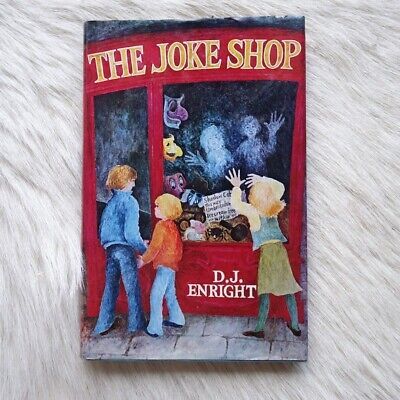
d j enright the joke shop hardcover dust jacket
0 notes
Text
felt fun to do a live reaction of texas chainsaw massacre SOOO doing it again with the second film except its all in one post rather than a reblog chain! under the cut woo yeah
"oh hey that sign says dallas! this takes place in texas, cool! ........wait...."/srs
oh my god these two dudes are annoying as hell but at least one of them has cool glasses. me want
its not often that i root for a character to be offed however these two deserved it omfg they were so annoying
god the head getting chainsawed in half... such a cool effect and the first gore thing in a movie to make me recoil, at least first in a while... last time that i cringed like that was with the thing.... speaking of i need to lock in and finish watching, i never finished it because i pussied out
the movie keeps stopping and needing to buffer so theres going to be timestamps randomly littered througout this simply so i can know where in the movie to return if i swap stuff up, these are for me so ignore them... 17:00
lowkey rocking with the fry house this man is fully of whimsy
Unfortunately you'd better stop with that meat mess of the chili, so that you could have it for a cookoff actually, so that you could drink a soda and then eat a candy and then-- burp Excuse me. Eat meat. So- grunt I was at a cookoff and I eat chili with a- cornbread- and then, I drink a cherry sprite in the cookoff. And that was ago when I was actually well about that. Plus I would rather- eat chocolate, as well. So, that chili mess; clean it up please. So, I don't wanna cause any more troublemakers./ref
drayton couldve passed as a semi sweet grandpa if he didnt eat people/j
tweaking out over what vaguely looks like a lesbian flag at 20:23 but logically i know its not
"oh, my kid banana!"
do you think leatherface and choptop (is that the dudes name?) looked at each other like this, but with more fear, when stretch started playing the murder on the radio- also what were the chances they were on that specific station at that time?
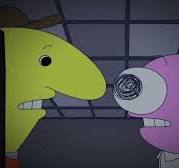
im going to be very upset if they kill LG, he made a fry house, hes got whimsy
BUBBAS THE YOUNGEST????
choptops only been on screen for 2 seconds and i already dig his vibe
"I like his vibe!" *choptop proceeds to eat a piece of his scalp*
ik im only on the second movie, and i do know theres a grandpa but like... where are the sawyers parents?? are they just deceased or?
35:00
BUBBA PUNK ASS JUMPSCARE
he do a little steppy jig with his chainsaw before chasing
oooo metal plate- wonder what that was for- did they put it in themselves or did they take choptop to the hospital?
"music is my life!" he just like me frfr
THEY GOT MY WHIMSICAL FRY HOUSE DUDE
i think. for both the first and second movie. its a nice attention to detail to have kirk and lg seize up and stuff after getting a head injury since like... accurate... nice little detail albeit a horrifying one
oh leatherface is getting freaky call that freakyface
oh boy i sure hope no one walks in as my back and computer screen are facing the door, while leatherface is sensually tracing his chainsaw up the bare leg of a woman
he got that thang on him though i just noticed how nice his tie looks i want it
i like how leatherface keeps doing the lil jig with his chainsaw its like he keeps hitting the emote button
ballsy lady protags my beloved yes girl go chase the chainsaw having killers after narrowly surviving, go unprepared and unequipped (affectionately but gOD)
ik its for plot reasons and suspense stuff but WHHHYYYYYYYY would enright drive his car at her in the middle of the night instead of just getting out and letting her know it was him... like i already knew it was him because i saw his fatass hat in the darkness but like- YOU KNOW????
why must all the slashers have big tiddies (not complaining i like em thick)
LGS STILL ALIVE?????
even half skinned and after a bad beating to the skull with a hammer lg still tries to comfort her i think he might be one of my favorite lesser characters from a slasher film bro did not deserve to be in this mess
"s-c-e-x... sex!"
oh mu god is the body choptop carrying around meant to be the brother that died in the first movie... speaking of, where the fuck was choptop in the first movie?
oooooooh quick search says he was in Vietnam and thats also why he has the metal plate... which... i mean hes been mentioning it here and there but i deadass could not tell if he was being /srs or not i feel so dumb i thought i was so smart for thinking it wasnt that serious
"youre balling up his shit"
THE GRANDPAS STILL ALIVE WHAT THE HELL
bro took a chainsaw to the ass
im sorry but theres no way in hell enrights tiny ass chainsaw was long enough to go right through bubbas midsection and still have a sizable piece of blade sticking out the other end
wait nvm i forgot he got the third larger one but i dont remember it being that long
WDYM THERE WAS JUST. A GRENADE ON NUBBINS CORPSE THE ENTIRE TIME
ik stretch tweaking out with the chainsaw at the end is a reference to the ending of the first but its so so corny
anyways TCM2.... 8.5/10 i enjoyed it a little more than the last!! woo yeah!!
1 note
·
View note
Text

Alredered Remembers British poet and novelist D. J. Enright, on his birthday.
“An authentic and ingenious account of the ingeniously counterfeit in art and in life.”
— D. J. Enright
0 notes
Text

"Des infractions au contrôle des prix," La Presse. August 10, 1943. Page 3. ---- Mme Corinne Filiatrault, veuve de M. J.-B. Laverdure et M. Léopold Laverdure, falsant affaires sous les noms et raison sociale de J.-B. Laverdure Enregistré, épicier de Mont- réal, ont reconnu leur culpabilité devant le juge F.-T. Enright à cinq accusations portées contre eux par la Commission des prix et du commerce en temps de guerre.
Léopold Laverdure, coupable d'avoir vendu au gros des pommes de terre sans fournir à l'acheteur une facture indiquant les détails de la vente, a été condamné à une amende de $150, et aux frais ou, à défaut de paiement, 3 mois de prison. Une amende de $25 et les frais lui ont été Imposés, parce qu'il s'était rendu coupable d'avoir conclu une transaction, dont le but était de contourner les règlements de la Commission. Il devra payer une autre amende de $25 et les frais pour avoir vendu les pommes de terre à un prix plus élevé que le prix maximum fixé.
Mme Filiatrault a été condamnée aux frais seulement pour s'être rendue coupable d'avoir vendu des pommes de terre à un prix plus élevé que le prix maximum fixé et d'avoir pris part à une transaction faite dans le but de contourner les règlements de la Commission des Prix.
Le juge Enright a fait remarquer que ceux qui tentaient ainsi de se soustraire aux règlements de la Commission commettaient un acte de sabotage et devaient être sévèrement punis. Me Frank-D. Genest représentait la poursuite.
Pour avoir vendu ou offert en vente, au détail, de la glace à des prix plus élevés que les prix légaux fixés par la Commission, M. 8. Lapierre, 722 rue Saint-Ferdinand, & Montréal, a été condamné par le même juge à une amende de $50 et aux frais, Me Jacques Rousseau occupait pour la Commission.
#montreal#wartime prices and trade board#price control#black market#illegal sales#potato farming#potato crop#selling potatoes illegally#fines or jail#fines and costs#canada during world war 2#crime and punishment in canada#history of crime and punishment in canada#time served#sentenced to prison#montreal jail
0 notes
Text
The Mysterious Death of a Hollywood Director
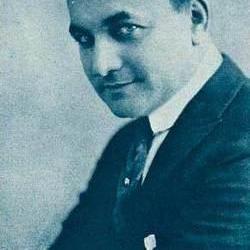
This is the tale of a very famous Hollywood mogul and a not-so-famous movie director. In May of 1933 they embarked together on a hunting trip to Canada, but only one of them came back alive. It’s an unusual tale with an uncertain ending, and to the best of my knowledge it’s never been told before.
I. The Mogul
When we consider the factors that enabled the Hollywood studio system to work as well as it did during its peak years, circa 1920 to 1950, we begin with the moguls, those larger-than-life studio chieftains who were the true stars on their respective lots. They were tough, shrewd, vital, and hard working men. Most were Jewish, first- or second-generation immigrants from Europe or Russia; physically on the small side but nonetheless formidable and – no small thing – adaptable. Despite constant evolution in popular culture, technology, and political and economic conditions in their industry and the outside world, most of the moguls who made their way to the top during the silent era held onto their power and wielded it for decades. Their names are still familiar: Zukor, Goldwyn, Mayer, Jack Warner and his brothers, and a few more. And of course, Darryl F. Zanuck. In many ways Zanuck personified the common image of the Hollywood mogul. He was an energetic, cigar-chewing, polo mallet-swinging bantam of a man, largely self-educated, with a keen aptitude for screen storytelling and a well-honed sense of what the public wanted to see. Like Charlie Chaplin he was widely assumed to be Jewish, and also like Chaplin he was not, but in every other respect Zanuck was the very embodiment of the dynamic, supremely confident Hollywood showman.
In the mid-1920s he got a job as a screenwriter at Warner Brothers, at a time when that studio was still something of a podunk operation. The young man succeeded on a grand scale, and was head of production before he was 30 years old. Ironically, the classic Warners house style, i.e. clipped, topical, and earthy, often dark and sometimes grimly funny, as in such iconic films as The Public Enemy, I Am a Fugitive from a Chain Gang, and 42nd Street, was established not by Jack, Harry, Sam, or Albert Warner, but by Darryl Zanuck, who was the driving force behind those hits and many others from the crucial early talkie period. He played a key role in launching the gangster cycle and a new wave of sassy show biz musicals. At some point during 1932-33, however, Zanuck realized he would never rise above his status as Jack Warner’s right-hand man and run the studio, no matter how successful his projects proved to be, because of two insurmountable obstacles: 1) his name was not Warner, and 2) he was a Gentile. Therefore, in order to achieve complete autonomy, Zanuck concluded that he would have to start his own company.
In mid-April of 1933 he picked a public fight with Jack Warner over a staff salary issue, then abruptly resigned. Next, he turned his attention to setting up a company in partnership with veteran producer Joseph Schenck, who was able to raise sufficient funds to launch the new concern. And then, Zanuck invited several associates from Warner Brothers to accompany him on an extended hunting trip in Canada.
Going into the wilderness and killing wild game, a pastime many Americans still regard as a routine, unremarkable form of recreation, is also of course a conspicuous show of machismo. But in this realm, as with his legendary libido, Zanuck was in a class by himself. He had been an enthusiastic hunter most of his life, dating back to his boyhood in Nebraska. Once he became a big wheel at Warners in the late ’20s he took to organizing high-style duck-hunting expeditions: the young executive and his fellow sportsmen would travel to the appointed location in private railroad cars, staffed by uniformed servants. Heavy drinking on these occasions was not uncommon. (Inevitably, film buffs will recall The Ale & Quail Club from Preston Sturges’ classic comedy The Palm Beach Story, but DFZ and his pals were not cute old character actors, and their bullets were quite real.) Members of Zanuck’s studio entourage were given to understand that participation in these outings was de rigueur if they valued their positions, and expected desirable assignments in the future. Director Michael Curtiz, who had no fondness for hunting, remembered the trips with distaste, and recalled that on one occasion he was nearly shot by a casting director who had no idea how to properly handle a gun.
But ducks were just the beginning. In 1927 Zanuck took his wife Virginia on an African safari. In Kenya Darryl bagged a rhinoceros and posed for a photo with his wife, crouched beside the rhino’s carcass. Virginia, an erstwhile Mack Sennett bathing beauty and former leading lady to Buster Keaton, appears shaken. Her husband looks exhilarated. During this safari Zanuck also killed an elephant. He kept the animal’s four feet in his office on the Warners lot, and used them as ashtrays. If any animal lover dared to express dismay, the Hollywood sportsman would retort: “It was him or me, wasn’t it?” Zanuck made several forays to Canada with his coterie in this period, gunning for grizzly bears. Director William “Wild Bill” Wellman, who was more of an outdoorsman than Curtiz, once went along, but soon became irritated with Zanuck’s bullying. The two men got into a drunken fistfight the night before the hunting had even begun. In the course of the ensuing trip the hunting party was snowbound for three days; Zanuck sprained his ankle while trailing a grizzly; the horse carrying medical supplies vanished; and Wellman got food poisoning. “It was the damnedest trip I’ve ever seen,” the director said later, “but Zanuck loved it.”
Now that Zanuck had severed his ties with the Warner clan and was on the verge of a new professional adventure, a trip to Canada with a few trusted associates would be just the ticket. This time the destination would be a hunting ground on the banks of the Canoe River, a tributary of the Columbia River, 102 miles north of Revelstoke, British Columbia, a city about 400 miles east of Vancouver. There, in a remote scenic area far from any paved roads, telephones, or other niceties of modern life, the men could discuss Zanuck’s new production company and, presumably, their own potential roles in it. Present on the expedition were screenwriter Sam Engel, director Ray Enright, 42nd Street director Lloyd Bacon, producer (and former silent film comedian) Raymond Griffith, and director John G. Adolfi, best known at the time for his work with English actor George Arliss. Adolfi, who was around 50 years old and seemingly in good health, would not return.
II. The Director
Even dedicated film buffs may draw a blank when the name John Adolfi is mentioned. Although he directed more than eighty films over a twenty-year period beginning in 1913, most of those films are now lost. He worked in every genre, with top stars, and made a successful transition from silent cinema to talkies. He seems to have been a well-respected but self-effacing man, seldom profiled in the press.
According to his tombstone Adolfi was born in New York City in 1881, but the exact date of his birth is one of several mysteries about his life. His father, Gustav Adolfi, was a popular stage comedian and singer who emigrated to the U.S. from Germany in 1879. Gustav performed primarily in New York and Philadelphia, and was known for such roles as Frosch the Jailer in Strauss’ Die Fledermaus. But he was a troubled man, said to be a compulsive gambler, and after his wife Jennie died (possibly of scarlet fever) it appears his life fell apart. Gustav’s singing voice gave out, and then he died suddenly in Philadelphia in October 1890, leaving John and his siblings orphaned. (An obituary in the Philadelphia Jewish Exponent reported that Gustav suffered a stroke, but family legend suggests he may have committed suicide.) After a difficult period John followed in his father’s footsteps and launched a stage career, and was soon working opposite such luminaries of the day as Ethel Barrymore and Dustin Farnum. Early in the new century the young actor wed Pennsylvania native Florence Crawford; the marriage would last until his death.
When the cinema was still in its infancy stage performers tended to regard movie work as slumming, but for whatever reason John Adolfi took the plunge. He made his debut before the cameras around 1907, probably at the Vitagraph Studio in Brooklyn. There he appeared as Tybalt in J. Stuart Blackton’s 1908 Romeo and Juliet , with Paul Panzer and Florence Lawrence in the title roles. He worked at the Edison Studio for director Edwin S. Porter, and at Biograph in a 1908 short called The Kentuckian which also featured two other stage veterans, D.W. Griffith and Mack Sennett. Most of Adolfi’s work as a screen actor was for the Éclair Studio in Fort Lee, New Jersey, the first film capital. The bulk of this company’s output was destroyed in a vault fire, but a 1912 adaptation of Robin Hood in which Adolfi appeared survives. That same year he also appeared in a famous docu-drama, as we would call it, Saved from the Titanic. This ten-minute short premiered less than a month after the Titanic disaster, and featured actress Dorothy Gibson, who actually survived the voyage, re-enacting her experience while wearing the same clothes she wore in the lifeboat. (This film, unfortunately, is among the missing.) After appearing in dozens of movies Adolfi moved behind the camera.
Much of his early work as a director was for a Los Angeles-based studio called Majestic, where he made crime dramas, Westerns, and comedies, films with titles like Texas Bill’s Last Ride and The Stolen Radium. In 1914 the company had a new supervisor: D. W. Griffith, now the top director in the business, who had just departed Biograph. Adolfi was one of the few Majestic staff directors who kept his job under the new regime. A profile in the February 1915 issue of Photoplay describes him as “a tallish, good-looking man, well-knit and vigorous, dark-haired and determined; his mouth and chin suggest that their owner expects (and intends) to have his own way unless he is convinced that the other fellow’s is better.” It was also reported that Adolfi had developed something of a following as an actor, but that he dropped out of the public eye when he became a director. Presumably, that’s what he wanted.
Adolfi left Majestic after three years, worked at Fox Films for a time as a staff director, then freelanced. During the remainder of the silent era he guided some of the screen’s legendary leading ladies: Annette Kellerman (Queen of the Sea, 1918), Marion Davies (The Burden of Proof, 1918), Mae Marsh (The Little ‘Fraid Lady, 1920), Betty Blythe (The Darling of the Rich, 1922), and Clara Bow (The Scarlet West, 1925). Not one of these films survives. A profile published in the New York World-Telegram during his stint at Fox reported that Adolfi was well-liked by his employees. He was “reticent when the conversation turned toward himself, but frank and outspoken when it concerned his work. Mr. Adolfi is not only a director who is skilled in the technique of his craft; he is also a deep student of human nature.” Asked how he felt about the cinema’s potential, he replied, with unconscious irony, “it is bound to live forever.”
III. The Talkies
In spring of 1927 Adolfi was offered a job at Warner Brothers. His debut feature for the studio What Happened to Father? (now lost) was a success, or enough of one anyway to secure him a professional foothold, and he worked primarily at WB thereafter. Thus he was fortuitously well-positioned for the talkie revolution, for although talking pictures were not invented at the studio it was Sam Warner and his brothers, more than anyone else, who sold an initially skeptical public on the new medium. After Adolfi had proven himself with three talkie features Darryl Zanuck handed him an expensive, prestige assignment, a lavish all-star revue entitled The Show of Shows which featured every Warners star from John Barrymore to Rin-Tin-Tin.
Other important assignments followed. In March of 1930 a crime melodrama called Penny Arcade opened on Broadway. It was not a success, but when Al Jolson saw it he sensed that the story had screen potential. He purchased the film rights at a bargain rate and then re-sold the property to his home studio, Warner Brothers. Adolfi was chosen to direct, but was doubtless surprised to learn that Jolson had insisted that two of the actors from the Broadway production repeat their performances before the cameras. One of the pair, Joan Blondell, had already appeared in three Vitaphone shorts to good effect, but the other, James Cagney, had never acted in a movie. Any doubts about Jolson’s instincts were quickly dispelled. Rushes of the first scenes featuring the newcomers so impressed studio brass that both were signed to five-year contracts. While Adolfi can’t be credited with discovering the duo, the film itself, re-christened Sinners’ Holiday,remains his strongest surviving claim to fame: he guided Jimmy Cagney’s screen debut.
At this point the director formed a professional relationship that would shape the rest of his career. George Arliss was a veteran stage actor who went into the movies and unexpectedly became a top box office draw. He was, frankly, an unlikely candidate for screen stardom. Already past sixty when talkies arrived, Arliss was a short, dignified man who resembled a benevolent gargoyle. But he was also a journeyman actor, a seasoned professional who knew how to command attention with a sudden sharp word or a raised eyebrow. Like Helen Hayes he was valued in Hollywood as a performer of unblemished reputation who lent the raffish film industry a touch of Class, in every sense of the word.
In 1929 Arliss appeared in a talkie version of Disraeli, a role he had played many times on stage, and became the first Englishman to take home an Academy Award for Best Actor. Thereafter he was known for stately portrayals of History’s Great Men, such as Voltaire and Alexander Hamilton, as well as fictional kings, cardinals, and other official personages. The old gentleman formed a close alliance with Darryl Zanuck, whom he admired, and was in turn granted privileges highly unusual for any actor at the time. Arliss had final approval of his scripts and authority over casting. He was also granted the right to rehearse his selected actors for two weeks before filming began. All that was left for the film’s director to do, it would seem, would be to faithfully record what his star wanted. Not many directors would accept this arrangement, but John Adolfi, who according to Photoplay “was determined to have his own way unless he is convinced that the other fellow’s is better,” clearly had no problem with it. His first film with Arliss was The Millionaire, released in May 1931; and in the two years that followed Adolfi directed eight more features, six of which were Arliss vehicles. He had found his niche in Hollywood.
One of Adolfi’s last jobs sans Arliss was a B-picture called Central Park, which reunited the director with Joan Blondell. It’s a snappy, topical, crazy quilt of a movie that packs a lot of incident into a 58-minute running time. Central Park was something of a sleeper that earned its director positive critical notices, and must have afforded him a lively holiday from those polite period pieces for the exacting Mr. Arliss.
In spring of 1933, after completing work on the Arliss vehicle Voltaire, Adolfi accompanied Darryl Zanuck and his entourage to British Columbia to hunt bears. Arliss intended to follow Zanuck to his new company, while Adolfi in turn surely expected to follow the star and continue their collaboration. Things didn’t work out that way.
IV. The Hunting Trip
It’s unclear how long the men were hunting before tragedy struck. On Sunday, May 14th, newspapers reported that film director John G. Adolfi had died the previous week – either on Wednesday or Thursday, depending on which paper one consults – at a hunting camp near the Canoe River. All accounts give the cause of death as a cerebral hemorrhage. According to the New York Herald-Tribune the news was conveyed in a long-distance phone call from Darryl Zanuck to screenwriter Lucien Hubbard in Los Angeles. Hubbard subsequently informed the press. The N.Y. Times reported that the entire hunting party (Zanuck, Engel, Enright, Bacon, and Griffith) accompanied Adolfi’s remains in a motorboat down the Columbia River to Revelstoke. From there the body was sent to Vancouver, B.C., where it was cremated. Write-ups of Adolfi’s career were brief, and tended to emphasize his work with George Arliss, though his recent success Central Park was widely noted. John’s widow Florence was mentioned in the Philadelphia City News obituary but otherwise seems to have been ignored; the couple had no children.
V. The Aftermath
Darryl F. Zanuck went on to found Twentieth Century Pictures, a name suggested by his hunting companion Sam Engel. One of the company’s biggest hits in its first year of operation was The House of Rothschild, starring George Arliss and directed by Alfred Werker. The venerable actor returned to England not long afterwards and retired from filmmaking in 1937. In his second book of memoirs, published three years later, Arliss devotes several pages of warm praise to Zanuck, but refers only fleetingly to the man who directed seven of his films, John Adolfi, and misspells his name.
In 1935 Zanuck merged his Twentieth Century Pictures with Fox Films, and created one of the most successful companies in Hollywood history. He would go on to produce many award-winning classics, including The Grapes of Wrath, Laura, and All About Eve. Zanuck’s trusted associates at Twentieth-Century Fox in the company’s best years included Sam Engel, Raymond Griffith, and Lloyd Bacon, all survivors of the Revelstoke trip. Personal difficulties and vast changes in the film industry began to affect Zanuck’s career in the 1950s. He left the U.S. for Europe but continued to make films, and sporadically managed to exercise control over the company he founded. He died in 1979.
In 1984 a onetime screenwriter and film critic named Leonard Mosley, who had known Zanuck slightly, published a biography entitled Zanuck: The Rise and Fall of Hollywood’s Last Tycoon. Aside from his movie reviews most of Mosley’s published work concerned military matters, specifically pertaining to the Second War World. His Zanuck bio reveals a grasp of film history that is shaky at times, for the book has a number of obvious errors. Nevertheless, it was written with the cooperation of Darryl’s son Richard, his widow Virginia, and many of the mogul’s close associates, so whatever its errors in chronology or studio data the anecdotes concerning Zanuck’s personal and professional activities are unquestionably well-sourced.
When Mosley’s narrative reaches May 1933, the point when Zanuck is on the verge of founding his new company, we’re told that he and several associates decided to go on a hunting trip to Alaska. The location is not correct, but chronologically – and in one other, unmistakable respect – there can be no doubt that this refers to the Revelstoke trip. From Mosley’s book:
“There is a mystery about this trip, and no perusal of Zanuck’s papers or those of his former associates seems to elucidate it,” he writes. “Something happened that changed his whole attitude towards hunting. All that can be gathered from the thin stories that are still gossiped around was that the hunting party went on the track of a polar bear somewhere in the Alaskan wilderness [sic], and when the vital moment came it was Zanuck who stepped out to shoot down the charging, furious animal. His bullet, it is said, found its mark all right, but it did not kill. The polar bear came on, and Zanuck stood his ground, pumping away with his rifle. Only this time it was not ‘him or me,’ but ‘him’ and someone else. The wounded and enraged bear, still alive and still charging, swerved around Zanuck and swiped with his great paw at one of the men standing behind him – and only after it had killed this other man did it fall at last into the snow, and die itself. That’s the story, and no one seems to be able to confirm it nor remember the name of the man who died. The only certain thing is that when Zanuck came back, he announced to Virginia that he had given up hunting. And he never went out and shot a wild animal again, not even a jackrabbit for his supper.”
VI. The Coda
Was John Adolfi killed by a bear? It certainly seems possible, but if so, why didn’t the men in the hunting party simply report the truth? Even if their boss was indirectly responsible, having fired the shots that caused the bear to charge, he couldn’t be blamed for the actions of a dying animal. But it’s also possible the event unfolded like a recent tragedy on the Montana-Idaho border. There, in September 2011, two men named Ty Bell and Steve Stevenson were on a hunting trip. Bell shot what he believed was a black bear. When the bear, a grizzly, attacked Stevenson, Bell fired again – and killed both the bear and his friend.
That seems to be the more likely scenario. If Zanuck fired at the wounded bear, in an attempt to save Adolfi, and killed both bear and man instead, it would perhaps explain a hastily contrived false story. It would most definitely explain the prompt cremation of Adolfi’s body in Vancouver. Back in Hollywood Joe Schenck was busy raising money, and lots of it, to launch Zanuck’s new company. Any unpleasant information about the new company’s chief – certainly anything suggestive of manslaughter – could jeopardize the deal. A man hit with a cerebral hemorrhage in the prime of life is a tragedy of natural causes, but a man sprayed with bullets in a shooting, accidental or not, is something else again. That goes double if alcohol was involved, as it reportedly was on Zanuck’s earlier hunting trips.
Of course, it’s also possible that Adolfi did indeed suffer a cerebral hemorrhage. Like his father.
John G. Adolfi is a Hollywood ghost. Most of his works are lost, and his name is forgotten. (Even George Arliss couldn’t be bothered to spell it correctly.) Every now and then TCM will program one of the Arliss vehicles, or Sinners’ Holiday. Not long ago they showed Adolfi’s fascinating B-picture Central Park, that slam-bang souvenir of the early Depression years in which several plot strands are deftly inter-twined. One of the subplots involves a mentally ill man, a former zoo-keeper who escapes from an asylum and returns to the place where he used to work, the Central Park Zoo. He has a score to settle with an old nemesis, an ex-colleague who tends the big cats. As the story approaches its climax, the escaped lunatic deliberately drags his enemy into the cage of a dangerous lion and leaves him there. In the subsequent, harrowing scene, difficult to watch, the lion attacks and practically kills the poor bastard.
by William Charles Morrow
* * * * * * * * * * * * * * * * *
My sources for this article, in addition to the Mosley biography cited in the text, include Stephen M. Silverman’s The Fox That Got Away: The Last Days of the Zanuck Dynasty at Twentieth-Century Fox (1988), and Marlys J. Harris’s The Zanucks of Hollywood: The Dark Legacy of an American Dynasty (1989). For material on John Adolfi I made extensive use of the files of the New York Public Library for the Performing Arts. Special thanks to James Bigwood for his prodigious research on the Adolfi family genealogy, and to Mary Maler, John Adolfi’s great-niece, for information she provided on her family.
12 notes
·
View notes
Text
The 1950s: English literature’s angry decade
Anger as a force in 1950s literature had its origins in a group known as the Movement. Deeply English in outlook, the Movement was a gathering of poets including Philip Larkin, Kingsley Amis, Elizabeth Jennings, Thom Gunn, John Wain, D J Enright and Robert Conquest. The Movement can be seen as an aggressive, sceptical, patriotic backlash against the cosmopolitan elites of the 1930s and 1940s. The poets in the group rejected modernism, avant-garde experimentation, romanticism and the metaphorical fireworks of poets such as Dylan Thomas. Their verse was ironical, down to earth, unsentimental and rooted in a nostalgic idea of English identity. European sympathies were regarded as unmistakable signs of intellectual pretentiousness and moral turpitude. For some critics and readers, the poets’ approach understandably evokes a narrow-minded Little Englandism. The Movement – were Oxbridge-educated, white, predominantly male (Jennings was the only woman in the group, and she was a late arrival), middle-class, Europhobic and for the most part heterosexual.
#a lot of research for an au fanfic I'm not sure I'll even write#keeping notes#also a lot of information I wasn't aware of
0 notes
Text

Lam, D., Enright, H. A., Cadena, J., Peters, S. K., Sales, A. P., Osburn, J. J., ... & Fischer, N. O. (2019). Tissue-specific extracellular matrix accelerates the formation of neural networks and communities in a neuron-glia co-culture on a multi-electrode array. Scientific reports, 9(1), 1-15.
#not a textpost#i just think they look neat#like a little universe in the in vitro neuron cell culture
0 notes
Quote
At this date I was a lover of the theatre: a Platonic lover, since my parents had not yet allowed me to enter one, and so inaccurate was the picture I had formed in my mind’s eye of the pleasures to be enjoyed there that I almost believed that each of the spectators looked, as through a stereoscope, at a scene that existed for himself alone, though similar to the thousand other scenes presented to the rest of the audience individually. ❧ Vladimir: We have that excuse. Estragon: It’s so we won’t hear. Vladimir: We have our reasons. Estragon: All the dead voices. Vladimir: They make a noise like wings. Estragon: Like leaves. Vladimir: Like sand. Estragon: Like leaves. Silence. Vladimir: They all speak at once. Estragon: Each one to itself. Silence. Vladimir: Rather they whisper. Estragon: They rustle. Vladimir: They murmur. Estragon: They rustle. Silence. Vladimir: What do they say? Estragon: They talk about their lives. Vladimir: To have lived is not enough for them. Estragon: They have to talk about it. Vladimir: To be dead is not enough for them. Estragon: It is not sufficient. Silence. Vladimir: They make a noise like feathers. Estragon: Like leaves. Vladimir: Like ashes. Estragon: Like leaves. Long silence. Vladimir: Say something!
Marcel Proust, from ‘Combray’ in In Seach of Lost Time, Volume 1: Swann’s Way, trans. C. K. Scott Moncrieff, Terence Kilmartin, D. J. Enright
Samuel Beckett, from Act 2 in Waiting for Godot.
0 notes
Text
The Rebel Summary in English by D. J. Enright
The Rebel Summary in English by D. J. Enright

We have decided to create the most comprehensive English Summary that will help students with learning and understanding.
The Rebel Summary in English by D. J. Enright The Rebel by D. J. Enright About the Poet Poet Name D. J. Enright Born 11 March 1920, Royal Leamington Spa, United Kingdom Died 31 December 2002, London, United Kingdom Genre Poetry, fiction, essays EducationNorth…
View On WordPress
0 notes